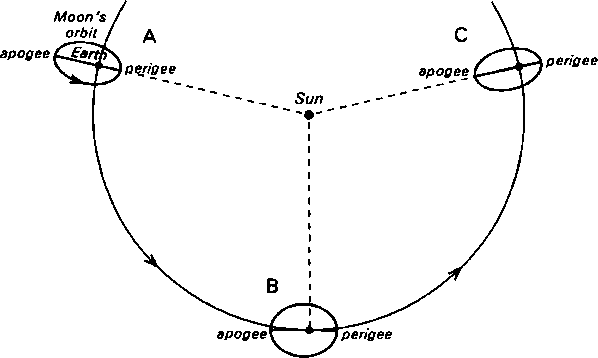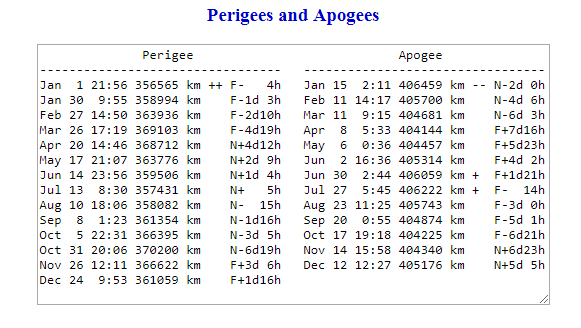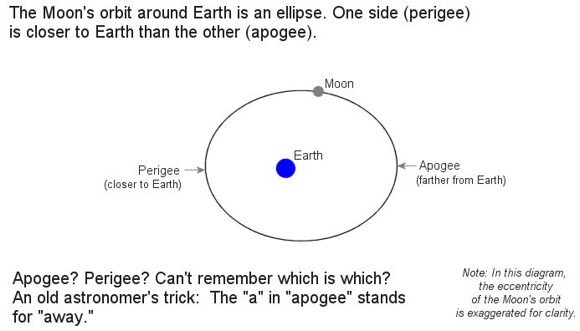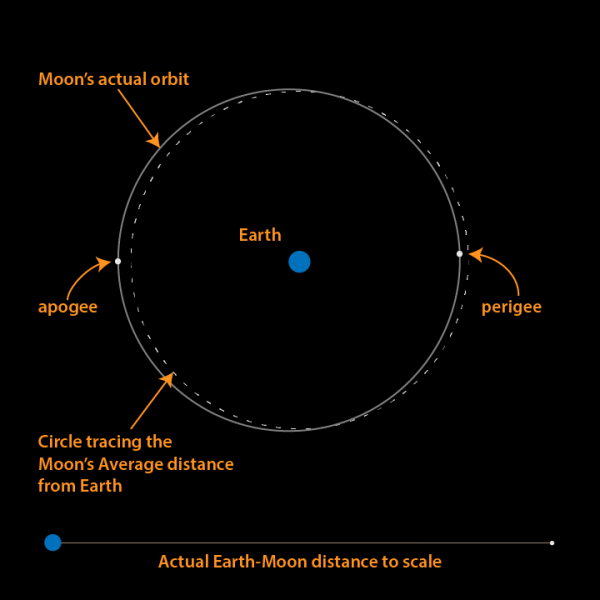You know the moon changes its distance from Earth continually. It must, since the orbit of the moon is not a perfect circle; instead, it’s an ellipse, like a circle someone sat down on. The moon was last at perigee – its closest point to Earth for this month – on April 20. So on the date of the article you’re reading now – April 25, 2018 – and into early May, the moon’s distance from Earth is steadily increasing. It’ll continue increasing until our companion world reaches apogee – its farthest point for the month – on May 6.
Moon’s distance at April 20 perigee: 229,108 miles or 368,714 km
Moon’s distance at May 6 apogee: 251,318 miles or 404,457 km
Separation: 22,210 miles or 35,743 km
The moon will reach mean distance of 238,855 miles (384,400 km) on April 28, 2018.
Click here to find out the moon’s present distance.
Tonight’s moon is still in the constellation Leo the Lion, as shown on the chart below.

In 2018, the largest separation between lunar perigee and apogee happened in January.
January 1 closest perigee of 2018 = 221,559 miles or 356,565 km
January 15 farthest apogee of 2018 = 252,565 miles or 406,464 km
Separation: 31,006 miles or 49,899 km
Throughout the year, the separation between perigee and apogee varies from a maximum of about 31,00 miles (50,000 km) to a minimum of approximately 21,000 miles (34,000 km). The illustration below helps to explain why.

When the moon’s perigee-apogee line points toward the sun, as it does at A and C in the diagram, the moon’s orbit is maximally eccentric (oblong), which means a closer perigee distance yet a more distant apogee. Hence, the separation between perigee and apogee is especially profound. The perigee-apogee line points toward the sun in cycles of about 206 days (7 lunar months).
On the other hand, when the moon’s perigee-apogee line makes a right angle with the Earth-sun line, as at B in the diagram, the moon’s eccentricity is at a minimum (closest to circular). That gives us a farther perigee distance yet closer apogee distance, which means a minimal separation between perigee and apogee (B in diagram). The period of time from A to B (or B to C) in the diagram is about 103 days (3 1/2 lunar months).



Bottom line: The moon was closest to Earth April 20. It’ll be farthest from Earth May 6. The moon on April 25, 2018, is a little closer than its average distance from Earth.
Resources:












